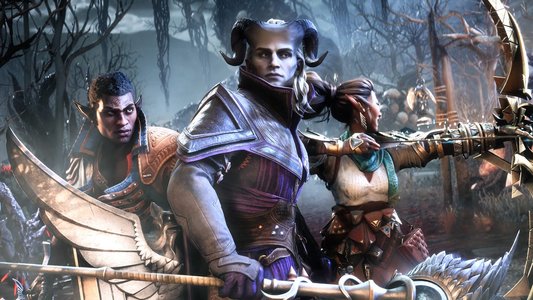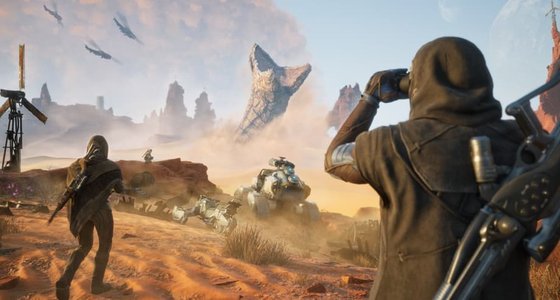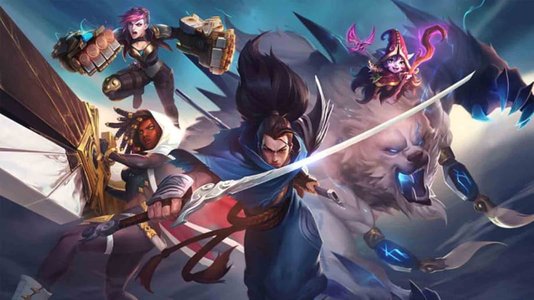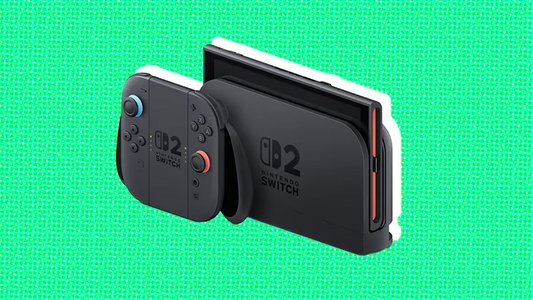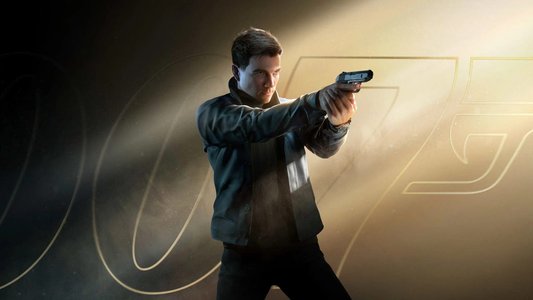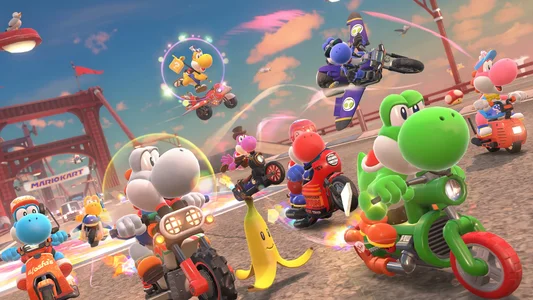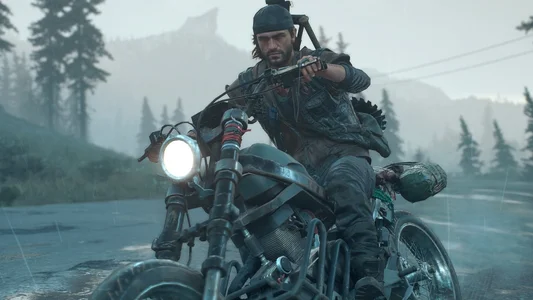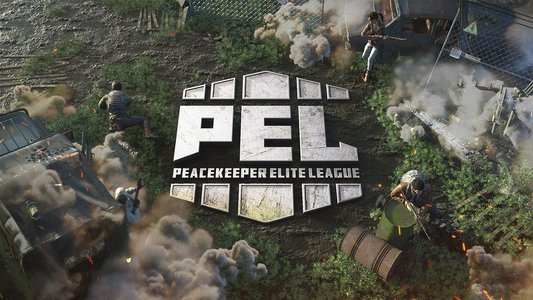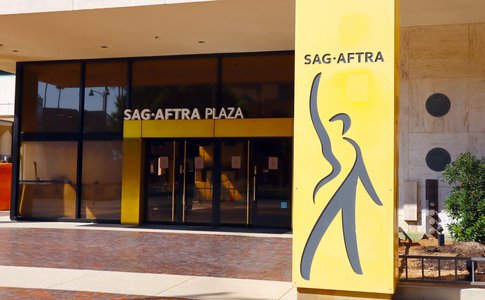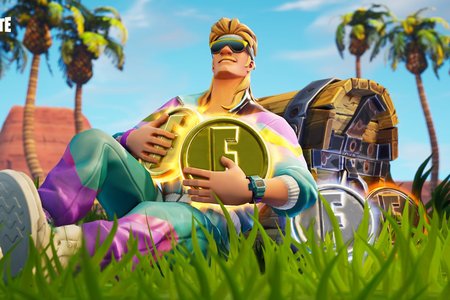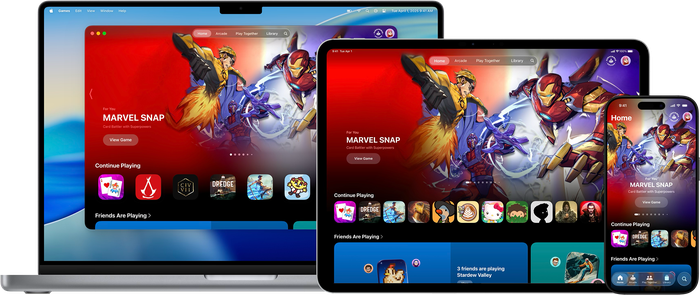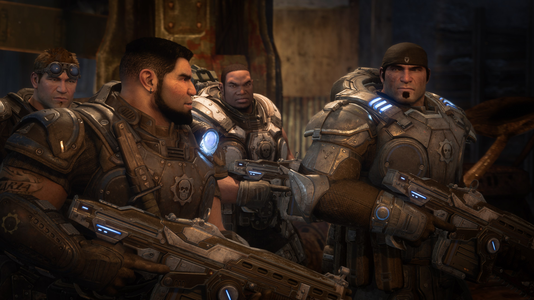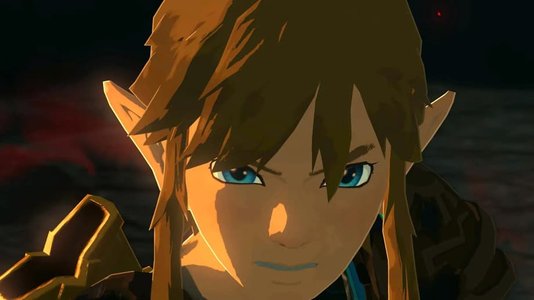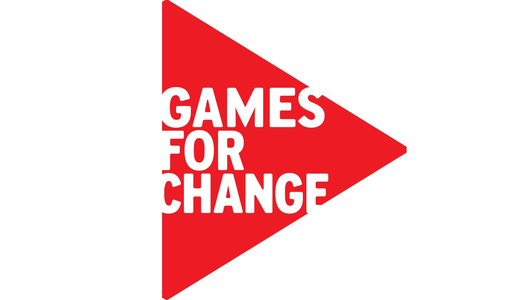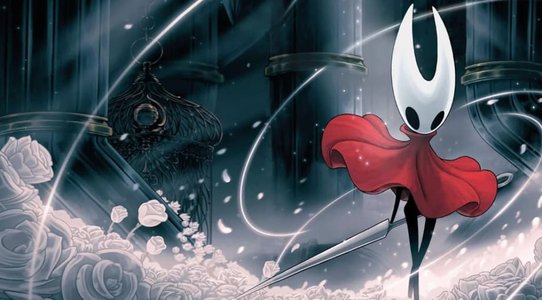When Harmonix’s Rock Band launched ten years ago on this date, it was the culmination of one of the hottest gaming trends of the decade. It involved designing four new peripherals as well as an ambitious multiplayer rhythm game with an iTunes-like online store.
To celebrate its 10th anniversary, we present this postmortem, which first ran in the May 2008 issue of Game Developer Magazine. It was written by Rob Kay, who was then the director of design at Harmonix, with contributions from Eran Egozy, VP engineering, Ryan Lesser, art director, Dan Teasdale, senior designer, Tracy RosenthalNewsom, director of production, Daniel Sussman, director of hardware development, and Greg LoPiccolo, VP of product development.
THE STORY OF ROCK BAND’S BIRTH, AND the transformation we’ve gone through as a company to create it, is a tale that an accomplished writer will someday pen, but for now you’ve got me. I was the lead designer on Rock Band. Working with our senior management to capture their vision for this game, I did wonder if they’d lost their minds. Their vision was simple: create a music game that takes instrument simulation to its logical conclusion—getting a full band together.
The intimidating reality the team faced was that this wonderful vision entailed an enormous workload. The drumming component gameplay of Rock Band would need to be built from a standing start. Guitar, bass guitar, and singing gameplay would have to be refined to work in a band setting. Finally, and crucially, we had to develop new cooperative multiplayer gameplay to tie drums, vocals, guitar and bass components together into one cohesive Rock Band experience.
In short, we strove to create the ultimate party game. But it didn’t end there. The vision included customization features to give bands their own identity, a world to tour, and enough depth to keep bands playing for months. Add in unparalleled DLC that would transform the game into a music platform, and it was one tantalizing package. Of course, then we had to make it!
The team would eventually grow to around 160 people at Harmonix, and countless contractors elsewhere, but it all began with three people making a drum prototype at the tail end of 2005.
WHAT WENT RIGHT
1) PROTOTYPED DRUMS EARLY
We got our drumming prototype up and running before doing anything else. This afforded us time to understand the unique hardware needs, interface challenges, and learning ramp inherent in learning to play the drums.
As with all instruments in Rock Band, we wanted something that captured the feel of playing the real thing. We threw around various ideas for the basic form factor, and as our prototype hardware was configurable, we were also able to experiment with different pad layouts before settling on four pads and a kick pedal. We connected this to our PC-based prototype software, gave the drum setup its own room, and encouraged people around the company to come play it and let us know what they thought.
This drum prototype taught us a great deal. Crucially, it revealed an interesting drum-centric problem with our Harmonix 3D interface concept. Our usual row of note lanes (as seen in many of our games, including Frequency, Amplitude, and Guitar Hero) worked fine for the drum pads but failed spectacularly on the kick drum pedal.
The spatial organization of notes on screen didn’t match the spatial relationship of the pads and pedal. This made readability of note patterns exceptionally tricky. Through a combination of theorizing and experimentation, we arrived at the solution seen in the final game—an orange line stretching across the whole track. We’re proud of this solution, and how early we nailed it considering how many other challenges lay ahead.
Perhaps the greatest discovery of this drum prototype was simply how fun it was to play. It really captured the feel and power of real drumming, which gave us a huge confidence boost.
2) DEVELOPED THE HARDWARE AND SOFTWARE IN TANDEM
We began Rock Band as a software developer, but decided to take on the task of designing and manufacturing the hardware ourselves. Designing the controllers from scratch—and starting up a major manufacturing effort in under a year—was an enormous undertaking with a considerable learning curve.
The payoff though was more than worth it. For a game like Rock Band, the hardware is at least as important as the software, if not more. We were able to design and develop the hardware and software together, taking full control over the user experience.
We began hardware development in February 2006, working with an industrial designer (J. Hayes Industrial Design) and a contract manufacturer (Canyon Creations). Because it was the least understood controller, we attacked the drums first. The big challenge was delivering the playing experience of a real drum kit, in a videogame controller that would cost a fraction of the price. The guitar controller was less blue sky, and development started after we had the basics of the drum controller down.
Hardware was a brave new world to us. Throughout the whole eighteen-month project cycle, we made mistakes (see "What Went Wrong") but tried to focus on understanding the critical decisions and making the right calls. In April 2007 we began tooling for both drums and guitar (cutting the steel molds that shape the plastic parts).
The molds take about eight weeks to complete, and then you have at least another four weeks of preproduction and tuning. In September 2007 our first containers left the China warehouse. By January 2008 over two million Rock Band bundles had shipped.
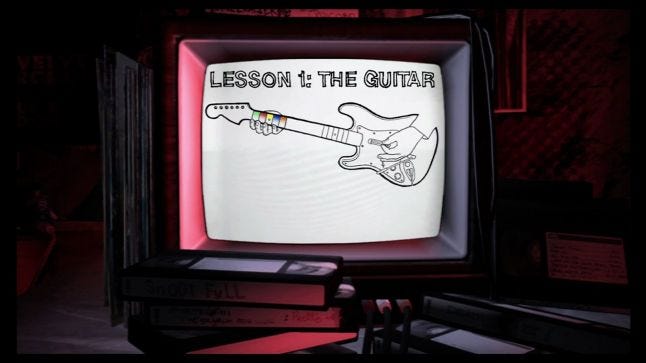
3) CAPTURED THE FEELING OF PLAYING IN A BAND
The biggest design challenge for Rock Band’s gameplay became all too obvious the moment we got our first version of a four-player game up and running. It was not a stellar group experience. Obviously, something key was missing—player interaction! There was no reason to care how other players were doing, let alone any of the interactions musicians in a real band might recognize. This cooperative multiplayer game mode was to be Rock Band’s reason for being, so it had to become amazing.
Enter the Harmonix Design Cabal, a mix of wily Harmonix vets and senior designers. This group identified some experiential goals for the gameplay team to go after. The experiential goals were “togetherness” and “distinct roles.” The gameplay team (three game coders, two UI artists, the audio lead, and myself) experimented for many months with gameplay mechanics and UI that met these goals.
We were scheduled loosely with three days a week set aside for iteration time. Each week, we’d meet with the cabal and review progress, which gave us enough freedom to react quickly and experiment, but also enough direction to stop us veering off course. We experimented with many scoring systems and gameplay mechanics to try and meet the high level goals. The whole company played this evolving game, and offered feedback and ideas, which fed into the process on numerous occasions.
Many experiments were failures, but taught us something valuable. Some worked well with four players, but fell apart with two or three. Some were diamonds in the rough, which we kept and revised and eventually honed into a cohesive whole. This was the process that birthed all of the unique Rock Band gameplay including individual fail outs, saving fallen band-mates, Unison Bonuses, Bass Grooves, Guitar Solos, Drum Fills, and Big Rock Endings. Together these features formed the “band” in Rock Band.

4) EMBRACED “AUTHENTICITY” AS A GUIDING PRINCIPLE
Very early on we knew our songs would encompass all forms of rock music, and that players would be choosing their own look in the character creator. We needed a way to approach the visual presentation that was generic enough to host any sub-genre of rock, and yet still offer a distinctive look and feel.
We focused on an authentic recreation of traditional rock & roll, with serious attention to detail and high production values. Character animation was motion captured from performing musicians who played in bands of a particular sub-genre rather than actors (we got punk rockers to do the punk rock mo-cap, for instance).
Clothing was labored over, with shops representing each sub-genre. Instruments were recreations of the real thing. The camera work and post-processing was tailored to present the live show through the lens of a music video. The lighting mimicked real rock show lighting as closely as possible. We even went so far as to create a custom animation system for the drummer so that every single drum hit is realistically played on the right drum or cymbal!
The litmus test “is it authentic?” began as an art direction, but quickly spread project wide. “Authenticity” became a buzzword in not only art reviews, but also design, hardware, music and writing discussions. The music had to be authentic, so we secured as many master tracks as possible. The guitar hardware had to be authentic so we worked with Fender to create a replica of their iconic Stratocaster guitar. It spread through our collective conscience; everyone heard the “authenticity” mantra and got behind it, unifying the overall presentation and vibe of the game.

5) MADE GOOD EARLY CALLS ON NETWORKING TECH
We made some key technical decisions about our approach to networking early on that really paid off.
We chose to use Quazal instead of making do with the network solution provided by the platforms alone. This decision had to be made far earlier than when our network features were fully designed. As it turned out, the flexibility afforded by Quazal far outweighed the additional complexity of integrating another middleware provider.
We came out with an awesome feature set that was custom crafted for our game, including head-to-head battles, online band play, a flexible leaderboard system that can hold thousands of boards, and persistent band data storage. We were also able to create a common code base for both Xbox 360 and PlayStation 3, which helped reduce development time and kept platform differences to a minimum.
We also decided to conduct extensive network bot testing for our online solution before release. We spent months developing a tool that simulates realistic network traffic and user behaviors.
We rented time on a huge supercomputer system with a 2 gigabit Internet connection and proceeded to attack the servers with complex scenarios simulating over 100,000 concurrent users. These tests uncovered piles of bugs and helped us make tons of client and server optimizations. The result: when we went live, everything worked! We had hardly a hitch and things continued to run smoothly, even into Christmas Day (which saw the largest number of simultaneous users online to date).

SIDEBAR: Weekly DLC and Music Store
From day one, we hoped Rock Band would become a fledgling music platform as well as a game. Our weekly song releases, generally two dollars a song with discounts for song packs, have proved incredibly popular, surpassing our expectations. We passed 2.5 million song purchases in our first two months alone, and the biggest seller so far has been the Metallica Pack.
Since launch, a Music Store has been added to the game via a free software update. We wanted to get this into the shipped game, but simply ran out of time. The UI has been designed to handle the sheer volume of DLC we’re making available, and improve the experience of browsing new songs (via things like cover art, audio previews, and difficulty ratings).
We’ve invested a huge amount of time and resources to make weekly DLC and the Music Store possible. It’s been well worth it though, and we’ll continue to develop this approach because we believe it’s the future of music gaming. Not only do game consoles now have hard drives and broadband Internet connections, but also our players seem to have an insatiable appetite for more music.
WHAT WENT WRONG
1) DIDN’T GO TO CHINA EARLY ENOUGH
With 20/20 hindsight, we clearly should have made an effort much earlier in our cycle to understand our hardware manufacturing partners. It is so critical that all the people building your game have a true understanding of that game, of the people who will be playing the game, and of the initial design intent of every feature. Good hardware specs are incredibly important but they only go so far, especially in areas involving the subtleties of feel
No tags.










